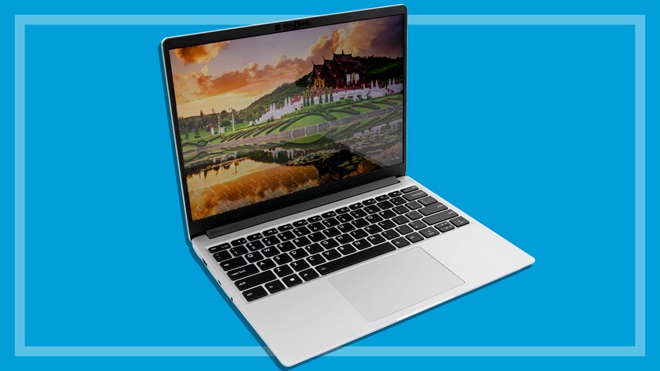CHOICE verdict
The Framework Laptop could be the 'Goldilocks' notebook you've been searching for. Its unique plug-in module approach gives you maximum customisation options and upgrade potential so you can make it just right for your needs, and for the long term. This thin and light 13.5-inch notebook offers stylish looks and impressive practicality. You can buy it as a readymade package with Windows 11 and add on the connectivity ports of your choosing, or you can go for the DIY Edition for more customisation options, including the Linux operating system.
Price: $1639
Contact: frame.work/au/en

The Framework Laptop is new to the Australian market and is available in three Intel 12th Gen Core i5 and i7 processor options (we bought the i5). Particularly noteworthy is that the modularity of the Framework Laptop extends to the processor.
The replaceable motherboard lets you upgrade to new CPU generations down the track. Along with user-replaceable memory, storage, battery and Wi-Fi, this could extend the usable life of the laptop considerably.
You could call the Framework Laptop a champion of the 'right to repair' movement
You could call the Framework Laptop a champion of the 'right to repair' movement, designed so that you can customise, upgrade and repair it yourself right from the outset and keep it for many years. This sets a new benchmark for a more sustainable approach to notebook computers.
The box even includes a Torx screwdriver for opening the base to access the RAM and SSD slots or to replace the Wi-Fi module and battery. You don't have to be a computer expert either – there are detailed setup, repair and upgrade guides on the website.

The underside of the Framework Laptop clearly shows the four port modules in place. Screws allow you to easily remove the base to access internal components.
Framework port flexibility
When selecting your Framework model from the website, you pick the ports to fill the four slots on its edges. These plug-in USB-C modules include the choice of USB-A, USB-C, HDMI, Ethernet, microSD, and DisplayPort.
You should pick at least one USB-C port, for charging the laptop, but we recommend getting a couple of USB-C ports, as this lets you plug in a USB-C hub for maximum flexibility.
While the Framework has four spaces for plug-in modules, we bought all six so we could swap them out as needed and give greater variety of ports. You can just remove a module and plug in another as needed.

Your choice of port modules can be slid into place, two on either side, and you can mix and match them as you like from the six available port options.
Our standard setup included modules for USB-C, USB-A, HDMI and microSD modules, and we also bought the Ethernet and DisplayPort modules to try them out. All worked fine in our testing.
The modules slide into their slots easily, but are not as easy to remove – while pressing down on the release, we needed a hard implement to push them out. This isn't really a bad thing – at least you know they won't come out accidentally.
Screen and keyboard
The laptop's squarish 13.5-inch screen has a resolution of 2256 x 1504 pixels and we found it very good overall, for both productivity and entertainment. It can lie flat all the way on the desk, but it's not a touchscreen.

Switches next to the front-facing camera can disable the camera and microphone, which is a nice privacy failsafe feature that we think more laptops should adopt.
The keyboard has keys that are backlit, soft, responsive and quiet, and there's a large touchpad for navigation as well as a fingerprint reader (which doubles as the power button) above the keyboard.
We found it a comfortable laptop to use overall, though the built-in speakers didn't impress. For ambient music you'll probably want to plug headphones or speakers into the headset port on the side.

Each of the six modules available has a different port type and you can swap them around in the four available slots depending on your needs.
Performance and battery
Performance was good, as you'd expect from our mid-range configuration of an Intel Core i5-1240P CPU, 8GB RAM, integrated graphics and 256GB SSD. This is fine for everyday tasks, but we found that extended CPU-intensive tasks will prompt the CPU fan to become noticeably loud.
Battery life was good, lasting just over five hours in our heavy-use rundown tests, while the screen brightness was very good, on par with the latest higher-end Apple and Microsoft devices.
Overall this is a solid, good-value laptop with versatile customisation options and longevity prospects
Recharging the battery to 80% capacity was relatively quick, at just over one hour, using the supplied USB-C charger.
Overall this is a solid, good-value laptop with versatile customisation options and longevity prospects. It's well worth considering if you're looking to dictate which ports your laptop has (as well as where they sit).
Note that buying this laptop will incur a foreign exchange fee, even though pricing on the site is listed in AUD.
We're on your side
For more than 60 years, we've been making a difference for Australian consumers. In that time, we've never taken ads or sponsorship.
Instead we're funded by members who value expert reviews and independent product testing.
With no self-interest behind our advice, you don't just buy smarter, you get the answers that you need.
You know without hesitation what's safe for you and your family.
And you'll never be alone when something goes wrong or a business treats you unfairly.
Learn more about CHOICE membership today
Stock images: Getty, unless otherwise stated.



